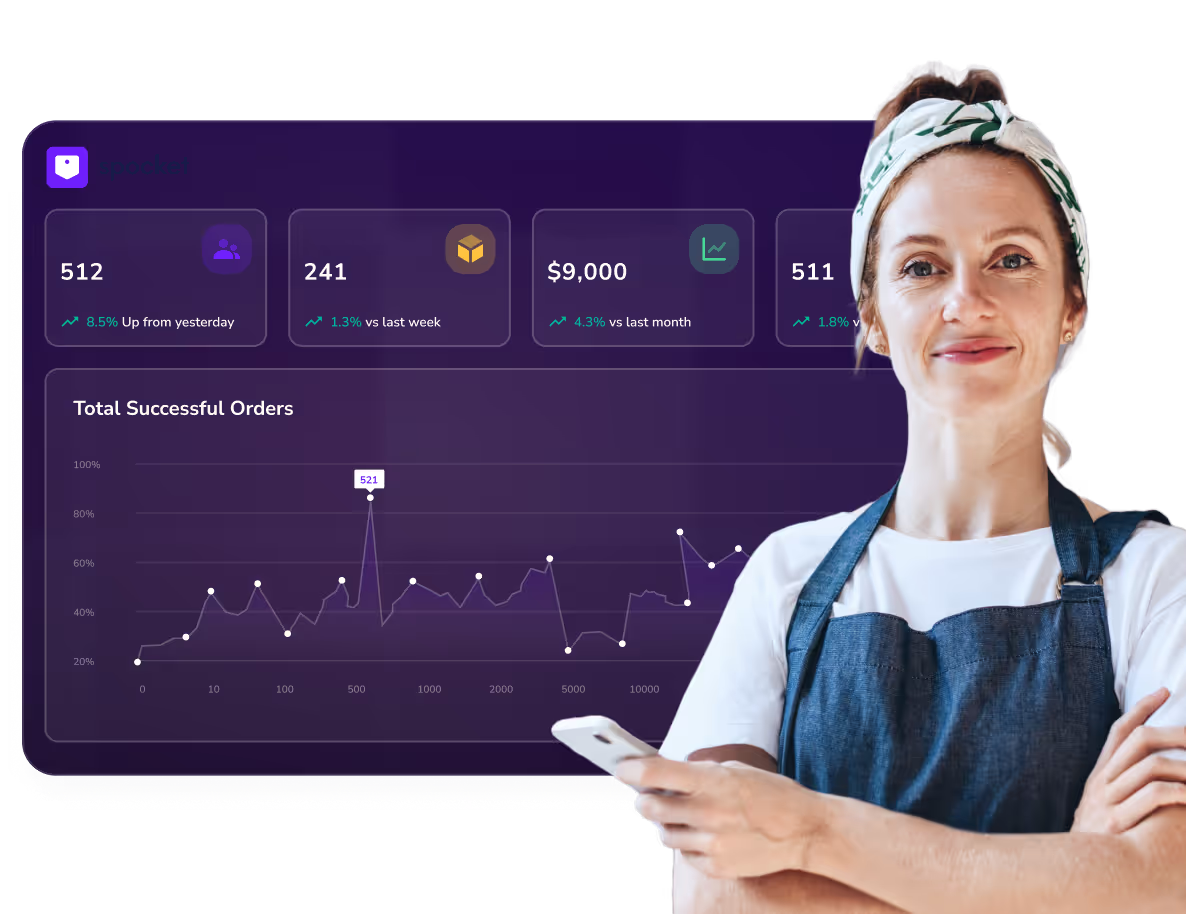Discount pricing strategies are a powerful way to attract customers, boost sales, and improve brand loyalty. Businesses across industries use discounting techniques to encourage purchases, clear inventory, and compete effectively in the market. However, if not planned well, discounts can reduce profit margins and devalue a brand.
The key to a successful discount pricing strategy is balancing short-term revenue growth with long-term customer value. From seasonal sales to tiered pricing, different approaches can help businesses maximize their profits while maintaining brand integrity. Whether you're an eCommerce store, a retail business, or a service provider, understanding the right discount models can help you grow strategically.
In this guide, we’ll explore the most effective discount pricing strategies, their benefits, and best practices to ensure sustainable growth.
What is Discount Pricing?
Discount pricing is a strategy where businesses reduce the price of products or services to attract more customers and boost sales. It is widely used in retail, e-commerce, and service industries to increase revenue, clear old inventory, and stay competitive.
By offering discounts, businesses create urgency and encourage customers to make quicker buying decisions. When done right, discount pricing can strengthen customer loyalty and improve cash flow without harming brand value.
How Does Discount Pricing Work?
Discount pricing works by lowering the original price of a product for a limited time or specific customers. Discounts can be applied in different ways, such as percentage-based reductions, fixed price cuts, or bundled offers.
For example, a dropshipping store may offer 20% off during a holiday sale, while a subscription service might provide a first-month discount for new users. Discounts can be applied at checkout, through promo codes, or as automatic reductions on selected items.
Why Businesses Use Discounts to Drive Sales?
Businesses use discounts to attract new customers, retain existing ones, and encourage repeat purchases. Discounts create a sense of urgency, making customers feel they are getting a great deal.
For eCommerce stores, discounts can help reduce cart abandonment rates by offering incentives to complete purchases. Retailers use seasonal discounts to clear out inventory before launching new collections. Additionally, businesses use discount pricing to stay competitive in a crowded market and improve their overall sales performance.
Types of Discount Pricing Strategies
Businesses use different discount pricing strategies to attract customers and increase sales. Each strategy serves a specific purpose, whether it’s boosting customer loyalty, clearing inventory, or encouraging bulk purchases. Here are some of the most effective types:
Buy One, Get One Free (BOGO) Discounts
This strategy encourages customers to buy more by offering a free or discounted product with a purchase. It works well for clearing excess inventory and increasing the average order value. Many businesses use BOGO deals to attract impulse buyers and drive immediate sales.
Seasonal & Holiday Discounts
Retailers and eCommerce stores often offer discounts during major shopping seasons like Black Friday, Christmas, and back-to-school sales. These discounts create urgency and capitalize on customer demand during peak shopping periods. They are also effective for making room for new stock.
First-Time Customer Discounts
To attract new buyers, businesses offer special discounts on first purchases. This strategy helps increase customer acquisition rates and encourages new shoppers to try a brand. It also enhances brand trust, leading to long-term customer relationships.
Bulk & Volume-Based Discounts
Customers who buy in larger quantities receive a price reduction. This strategy works well in wholesale, B2B sales, and subscription-based businesses. It incentivizes customers to spend more while helping businesses move inventory quickly.
Tiered Pricing Based on Spending Thresholds
Offering discounts when customers reach a certain spending limit encourages larger purchases. For example, “Spend $100, get 10% off” motivates buyers to add more items to their cart. It is a great way to increase average order value and revenue.
Flash Sales & Limited-Time Discounts
Flash sales create urgency by offering significant discounts for a short period. These promotions work well for driving impulse purchases and clearing stock quickly. Businesses use limited-time discounts to increase website traffic and generate quick revenue boosts.
Loyalty & Subscription Discounts
Many businesses reward returning customers with exclusive discounts. Loyalty programs and subscription discounts encourage repeat purchases and build long-term customer relationships. Customers who feel valued are more likely to stick with a brand.
Referral & Friend Discounts
Brands offer discounts to customers who refer friends or family. This strategy helps businesses grow through word-of-mouth marketing while rewarding loyal customers. It is cost-effective and generates high-quality leads.
Each discount pricing strategy serves a different business goal. The right approach depends on factors like target audience, product type, and market trends.
Choosing the Right Discount Pricing Model
Selecting the right discount pricing model is crucial for maximizing sales without hurting profit margins. Different models serve different business goals, from attracting new customers to increasing order value. Here’s how to choose the best approach for your brand.
Percentage-Based Discounts vs. Fixed Amount Discounts
Percentage-based discounts are common in retail and eCommerce. Offering “20% off” makes a deal look bigger, especially for higher-priced products. It’s great for increasing conversions.
Fixed amount discounts, such as “$10 off,” work well when selling lower-cost items. They create a clear savings benefit, which appeals to budget-conscious shoppers. This model is also useful for specific product promotions.
Sitewide vs. Product-Specific Discounts
Sitewide discounts apply to all items and are great for seasonal sales or customer appreciation events. They encourage bulk purchases and create a sense of urgency.
Product-specific discounts, on the other hand, focus on selected items. This strategy is useful for clearing slow-moving inventory or promoting bestsellers. Businesses use this approach to maintain profit margins while driving targeted sales.
Discount Codes vs. Automatic Discounts
Discount codes require customers to enter a code at checkout to receive savings. They work well for email marketing, influencer promotions, and exclusive deals. However, some shoppers may forget to apply the code, leading to abandoned carts.
Automatic discounts apply instantly when a customer meets the discount criteria. This approach improves the shopping experience by removing extra steps. It works well for tiered pricing and limited-time promotions.
Psychological Impact of Discounts on Buyers
Discount pricing plays on consumer psychology. Limited-time offers create urgency, making customers feel they need to act fast. Tiered discounts push shoppers to spend more to unlock bigger savings.
Pricing strategies like “Was $50, Now $30” create the illusion of a better deal. This technique increases perceived value, making customers more likely to buy.
Benefits & Risks of Discount Pricing
Discount pricing can be a powerful strategy to drive sales, but it also comes with challenges. While discounts can attract more customers and boost revenue, they can also impact profit margins and brand perception. Understanding both the advantages and disadvantages helps businesses use discount pricing effectively.
Advantages of Discount Strategies
Attracting New Customers: Discounts make products more appealing, especially to first-time buyers. A well-timed discount can bring in new customers who may not have purchased otherwise.
Increasing Conversion Rates: Shoppers are more likely to complete a purchase when they see a good deal. Discounts help reduce cart abandonment and push hesitant buyers to make a decision.
Encouraging Bulk Purchases: Offering discounts on bulk orders motivates customers to buy more. Strategies like tiered discounts or "Buy One, Get One Free" deals increase average order value.
Boosting Customer Loyalty: Loyalty-based discounts, such as exclusive deals for returning customers, strengthen relationships. They encourage repeat purchases and long-term brand engagement.
Disadvantages of Discounts
Reduced Profit Margins: Lowering prices means lower profits per sale. If not managed properly, discounting can hurt overall revenue and make it difficult to sustain business growth.
Creating Unrealistic Customer Expectations: Frequent discounts can train customers to wait for sales instead of buying at full price. This can reduce long-term profitability and make regular pricing less effective.
Devaluing the Brand: Heavy discounting may make products seem less valuable. If a brand is known for frequent sales, customers may question product quality or hesitate to pay full price.
How to Implement an Effective Discount Strategy
A well-planned discount pricing strategy can drive sales without damaging profits or brand value. To maximize results, businesses must set clear objectives, determine the right discount levels, and use data-driven insights.
Setting a Clear Discounting Goal
Every discount should have a purpose. Are you trying to attract new customers, clear out inventory, or increase order values? Defining a goal helps structure the discount and measure its success.
Defining the Right Discount Amount
Discounts should be appealing but sustainable. A small discount may not attract buyers, while a large one can hurt profits. Testing different discount levels can help find the right balance between value and profitability.
Using Discounts Without Hurting Brand Value
Frequent or deep discounts can make a brand seem lower in value. Instead, offer strategic promotions, such as exclusive deals for loyal customers or seasonal offers, to maintain a premium brand image while still driving sales.
Aligning Discounts With Marketing Campaigns
Discounts work best when they are part of a larger strategy. Combining discounts with social media promotions, email campaigns, and influencer partnerships can boost visibility and increase conversions.
Leveraging Data & Analytics for Smart Discounting
Tracking customer behavior, sales trends, and discount performance helps refine pricing strategies. Businesses can use insights from past campaigns to create targeted, high-converting offers without unnecessary losses.
Best Practices for Running Successful Discount Campaigns
A well-executed discount pricing strategy can increase conversions and attract more customers. However, the key is to offer discounts strategically rather than frequently. Here are the best practices to maximize the impact of your discount campaigns.
Timing Your Discounts for Maximum Impact
Choosing the right time to run discounts can make a huge difference in sales. Seasonal sales, holiday promotions, and end-of-quarter clearances are great opportunities to offer discounts when customers are already in a buying mindset.
Personalizing Discounts Based on Customer Behavior
Customers respond better to offers tailored to their preferences. Using purchase history, browsing behavior, and engagement data can help businesses create targeted discounts that feel relevant and exclusive.
Offering Exclusive VIP or Member Discounts
Loyal customers deserve rewards. Offering special discounts to VIP members or subscribers encourages repeat purchases and strengthens brand loyalty. This also creates a sense of exclusivity and appreciation.
Creating Urgency With Limited-Time Deals
Discounts that expire quickly drive impulse purchases. Flash sales, countdown timers, and “last chance” promotions encourage customers to buy now instead of waiting. Scarcity-driven deals boost conversions significantly.
Combining Discounts With Free Shipping Offers
Many shoppers abandon carts due to high shipping costs. Combining a discount with free shipping can remove that hesitation and make the offer more compelling. This strategy is especially useful for eCommerce businesses.
How Discounts Affect Customer Loyalty & Retention
Discount pricing strategies are great for attracting new customers, but do they help in building long-term relationships? The key is to use discounts wisely, ensuring they drive loyalty rather than short-term gains.
Do Discounts Attract Long-Term Customers?
Discounts can bring in first-time buyers, but they don’t always guarantee repeat purchases. If customers only shop when there’s a sale, they may not stick around when prices return to normal. To encourage long-term retention, businesses must pair discounts with exceptional service, quality products, and personalized experiences.
When to Shift From Discounts to Value-Based Pricing?
Offering discounts frequently can reduce perceived product value. At some point, businesses should transition from discount-driven sales to value-based pricing. This means highlighting product benefits, superior quality, and customer experience rather than relying on lower prices to drive sales.
Using Discounts to Reward Repeat Buyers
Instead of attracting only deal-seekers, businesses should use discounts to reward loyal customers. Offering exclusive discounts to repeat buyers, members, or subscribers makes them feel valued and encourages long-term retention. VIP deals, early access sales, and personalized offers are excellent ways to build strong customer relationships.
Discount Pricing in E-commerce vs. Physical Stores
Discount pricing strategies work differently for online and physical stores. While both aim to attract customers and increase sales, the approach varies based on shopping behaviors and market trends.
Online Discount Strategies That Work
E-commerce businesses have more flexibility in discount pricing. Strategies like flash sales, abandoned cart discounts, first-time buyer offers, and loyalty discounts are highly effective. Personalized discounts based on browsing history or past purchases can boost conversions. Free shipping offers, bundle deals, and exclusive online coupon codes also work well for digital shoppers.
In-Store Promotions & Discounting Tactics
Brick-and-mortar stores rely on seasonal discounts, clearance sales, in-store-only deals, and bulk purchase discounts to attract customers. Signage, loyalty cards, and limited-time promotions help increase foot traffic. Retailers also use BOGO (Buy One, Get One Free) and in-store-only discounts to encourage impulse purchases.
Hybrid Discount Models for Omnichannel Retailers
Many businesses now operate both online and offline, requiring a mix of discount pricing models. Click-and-collect discounts, app-exclusive deals, and personalized coupons for repeat customers help bridge the gap. Offering online discounts that can be redeemed in-store, or vice versa, creates a seamless omnichannel experience.
Measuring the Success of Discount Pricing Strategies
Using discounts effectively requires careful tracking and adjustments. A successful discount pricing strategy should increase sales without significantly reducing profits. Monitoring performance ensures that your pricing approach delivers the desired results.
Key Metrics to Track Discount Effectiveness
To evaluate your discount pricing strategies, track key metrics like conversion rate, average order value (AOV), customer acquisition cost (CAC), and profit margins. Pay attention to repeat purchase rates and customer lifetime value (CLV) to measure the long-term impact of discounts. If sales increase but profit margins drop too much, the discount may be too high.
Avoiding Overuse of Discounts While Maintaining Profitability
Excessive discounts can lead to customer dependency, reduced perceived value, and brand devaluation. To avoid this, use discounts strategically—such as for seasonal promotions, clearance sales, and limited-time offers. Encourage bulk purchases or loyalty-based rewards instead of frequent price cuts.
Adjusting Pricing Strategies Based on Sales Performance
Analyze past sales data to determine which discount types work best for your business. If flash sales and time-limited offers drive more conversions than permanent discounts, focus on urgency-based pricing. If customer retention drops after discount periods, consider transitioning to value-based pricing strategies instead.
Balancing Discounts With Brand Value & Profit Margins
While discounts can boost revenue, frequent markdowns may lead customers to expect lower prices permanently. Instead of regular discounts, consider tiered pricing, loyalty rewards, or exclusive member-only deals to protect your brand value. Ensure that your pricing model maintains profitability while still offering attractive deals.
Alternatives to Discounting for Sustainable Growth
Instead of reducing prices, focus on adding value to your offerings. Bundling products, offering free shipping, or providing bonus items can enhance customer satisfaction without cutting into profits. Personalized experiences, VIP memberships, and loyalty programs help build long-term relationships and encourage repeat purchases.
Final Thoughts on Discount Pricing
Discount pricing strategies can be powerful tools to boost sales and attract new customers, but they must be used wisely. While discounts can drive short-term revenue, over-reliance on them can hurt profit margins and weaken your brand’s perceived value. Striking the right balance ensures that discounts generate growth without leading to long-term losses.
Discounts are most effective when used strategically for seasonal promotions, product launches, or clearance sales. Limited-time discounts create urgency, encouraging customers to make quick purchases, while first-time customer discounts help attract new buyers. When implemented correctly, these short-term tactics can increase sales volume and enhance brand awareness without diminishing profitability.







































